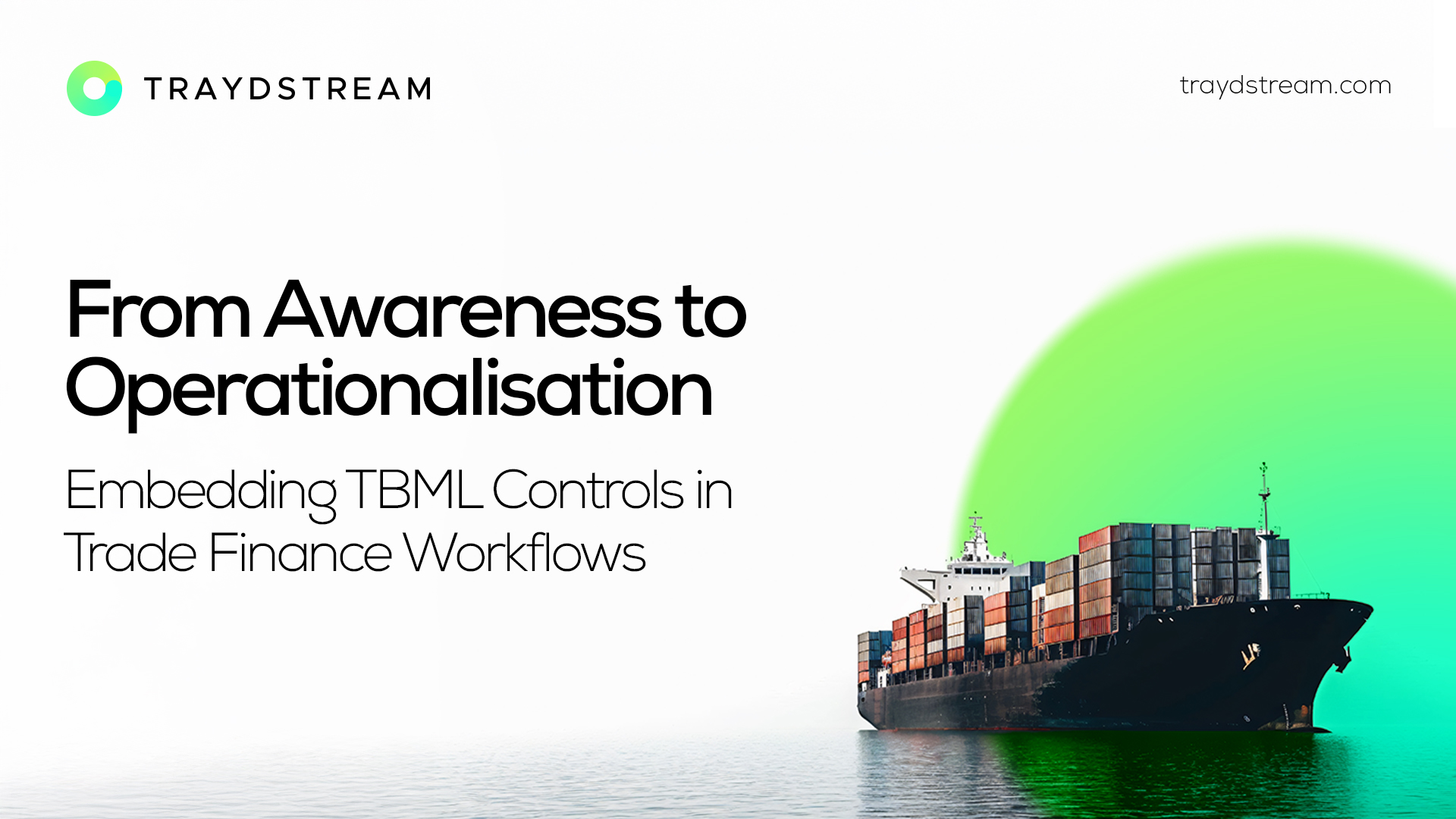
Turning policy into practice through intelligent document checking, jurisdictional compliance mapping, and AI-driven anomaly detection.
Trade-Based Money Laundering (TBML) has been identified by the Financial Action Task Force (FATF) as “one of the most sophisticated and under-detected methods of money laundering globally.” While awareness of TBML risk typologies has grown, the industry continues to lag in embedding effective, scalable controls at the operational level.
In an era of increasing regulatory scrutiny, it is no longer sufficient for financial institutions to rely on static controls, manual document checks, or retrospective investigations. Proactive, embedded, and auditable risk mitigation mechanisms are required — particularly at the transactional level.
Quantifying the Threat
- $2 trillion+: Estimated volume of global money laundering annually (UNODC), with a significant proportion transiting via international trade flows.
- $500 billion per year: Estimated global trade misinvoicing, a primary TBML method (Global Financial Integrity, 2023).
- 90%: Proportion of cross-border trade still reliant on unstructured, paper-based documentation (ICC, 2023).
- 0.2%: Estimated proportion of illicit flows currently intercepted or frozen (FATF).
- 74%: Compliance professionals citing TBML as one of their top five financial crime concerns (Thomson Reuters Risk Report, 2024).
1. Digitisation as the Precondition for Risk Control
Without digitised trade documentation, the application of programmatic checks and TBML controls remains fundamentally constrained. Traydstream enables institutions to digitise and structure trade documents — such as invoices, bills of lading, and packing lists — into machine-readable formats, allowing for granular data analysis and integrity validation at scale.
Structured data enables automated reconciliation of invoice values, commodity classifications, shipping routes, and Incoterms against policy thresholds and regulatory requirements.
2. Real-Time TBML Red Flag Detection Embedded in Processing
Manual compliance reviews are inconsistent, prone to fatigue, and constrained by time and volume. Traydstream’s intelligent platform integrates:
- Jurisdiction-specific regulatory logic, including FATF advisories, national typologies, and restricted entity lists.
- Machine learning and rules-based logic to detect anomalies in trade terms, counterparties, shipping routes, or commodity classification (e.g., HS code mismatches).
- Red flag alerting based on embedded typology patterns — including over/under-invoicing, circular routing, inconsistent quantity/value declarations, or absence of economic rationale.
Alerts are flagged contextually and can be calibrated to risk tolerance and internal policy frameworks.
3. Configurable Rules Engine for Multi-Jurisdictional Compliance
Trade operations often span multiple legal, regulatory, and commercial frameworks. Traydstream’s platform supports a configurable rules engine that allows institutions to tailor compliance logic to:
- Local regulatory guidance and national TBML frameworks.
- Internal risk appetite thresholds.
- Sector-specific policy overlays (e.g., dual-use goods, high-risk geographies).
This ensures both global compliance consistency and localised specificity — a critical requirement for institutions operating across diverse jurisdictions.
4. End-to-End Auditability and Escalation Protocols
Effective TBML mitigation requires traceability. Traydstream provides automated audit trails capturing:
- Source documentation and extracted data.
- System-applied logic, flags raised, and thresholds breached.
- Human interactions, overrides, and final determinations.
This functionality supports internal governance, compliance audits, and regulatory examinations — enabling defensibility of actions taken and decisions made.
5. Human Expertise, Augmented by Automation
According to a 2023 International Compliance Association survey, 72% of financial crime professionals report that intelligent automation has enhanced their ability to identify and act on suspicious activity. Traydstream does not replace human judgment but augments it — reducing operational burden and enabling compliance teams to focus on exceptions, investigations, and strategic risk management.
Conclusion: Operationalising TBML Mitigation in Trade Finance
In today’s compliance environment, awareness is no longer sufficient. Institutions must operationalise TBML controls — embedding them into the core of trade workflows to detect, assess, and act in real time.
By digitising documentation, embedding dynamic compliance logic, and enabling continuous, auditable oversight, Traydstream empowers financial institutions to move from passive compliance to active risk intelligence — transforming the document checking process into a first line of defence.
To learn how Traydstream can operationalise TBML controls within your institution’s trade finance ecosystem, [get in touch] or [book a demo] with our experts.

